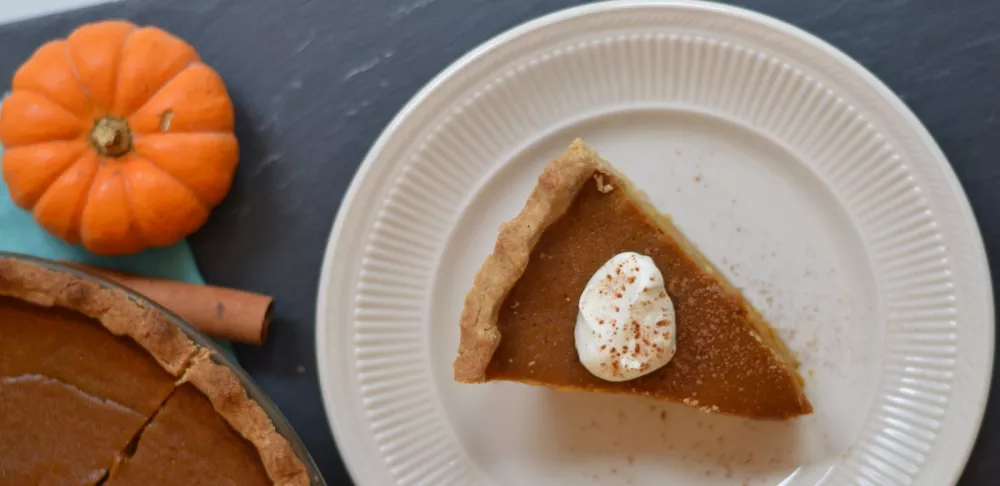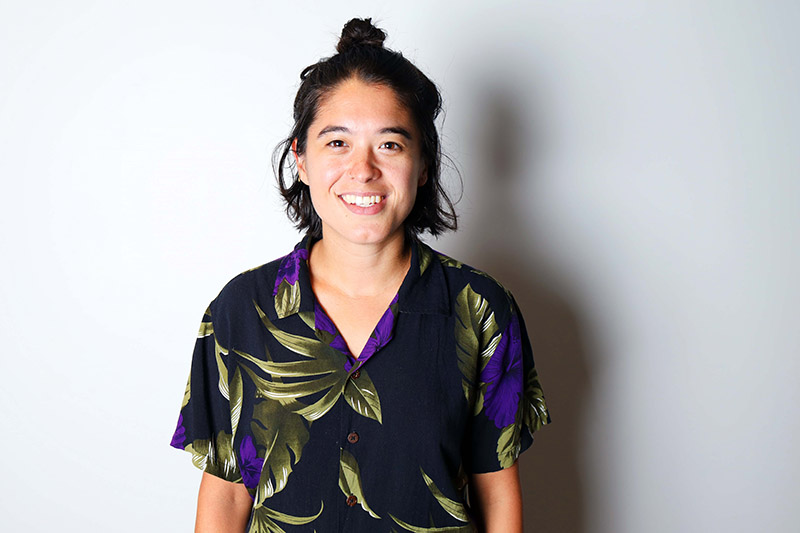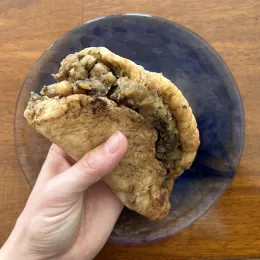With the holidays approaching, Pastry & Baking Arts Senior Chef-Instructor Stephen Chavez answers common questions about baking the perfect pumpkin pie.
Pie Crust
What type of crust do you prefer with pumpkin pie?
My preference for the pie crust is a flaky American pie dough or a classic pâte brisée. The bits of fat in the dough give a very light and flaky texture. If you’re making the dough, the biggest mistake someone can make with pie dough is simply overworking it. The more you mix the dough, the more gluten you create, which makes the dough chewy and tough. It’s best to make the dough and refrigerate it overnight before using it.
Should I blind bake the pie crust?
I don’t usually blind bake my pie dough, but it’s not a bad idea when working with such a wet batter like this one. The wetness may cause the bottom crust to stay soft rather than crisp, so you can blind bake the crust for about 15-20 minutes to avoid that.
The Filling
Do you prefer canned or fresh pumpkin for the filling?
Most chefs use canned pumpkin because it is inexpensive, ready to use, and available year around. That said, making your own is nice when pumpkin is in season and you have the time to cook and puree fresh pumpkin. Kabocha squash also makes a good pie!
Related recipe: Coconut Sticky Rice with Pandan-Poached Pumpkin
Ingredient quality always matters though. If you are purchasing pumpkin puree, buy a good quality name brand, or a non-name brand item from a store such as Trader Joes or Whole Foods. Using generic brands tends to compromise the quality of the puree. Usually, it is either bland and flavorless, or watery.
What spices do you add to the filling?
I use cinnamon (freshly grated or ground from the stick), nutmeg (freshly grated), ginger (freshly grated), clove (ground is good when used sparingly), and I like to add just a bit of cardamom for an “extra” flavor that will make your pie unique. When making pumpkin pie, I prefer freshly grated spices over ground spices because they have a strong flavor and aroma.
Do you add any other ingredients to the filling?
I may add a bit of homemade vanilla extract occasionally, but other flavors and extracts can dilute the sweet-savory flavor of the pumpkin. I don’t often add anything to the pumpkin puree other than spices.
If pumpkin pie isn’t your jam, try Chef Rory Macdonald’s Pecan Pie with Orange and Smoked Salt or Chef Jenny McCoy’s Double-Crust Apple-Cranberry Pie.
Baking Tips
How do you know when the pie is done baking?
By far, the biggest mistake people make with this dessert is over baking the pie. Remember that it is a custard and must be handled the same way that you would make a crème brûlée or any other custard. Bake it until there is a slight “soft” jiggle, but not a “wet” jiggle. Meaning, when you tap the pie, it should have just a little sway as a whole, but it should not have a wave as if it is still liquid.
Once you have that “soft” jiggle, take it out and allow it to cool naturally. This allows for “carry-over” cooking, and the pie will set completely. Then, refrigerate the pie overnight, which allows the texture to completely set into a beautiful, silky custard. When a pie is overbaked, it squeezes all of the moisture out, and the top will split or crack.
Do you need special equipment to bake a pumpkin pie at home?
Most home kitchens will have everything necessary for making pie. Some tools that help in process include a bowl scraper or pastry cutter to help blend the dough ingredients and a rolling pin to roll out the dough.
Students in Pastry & Baking and Plant-Based Culinary Arts practice making pies in class, check them out on our Instagram!






